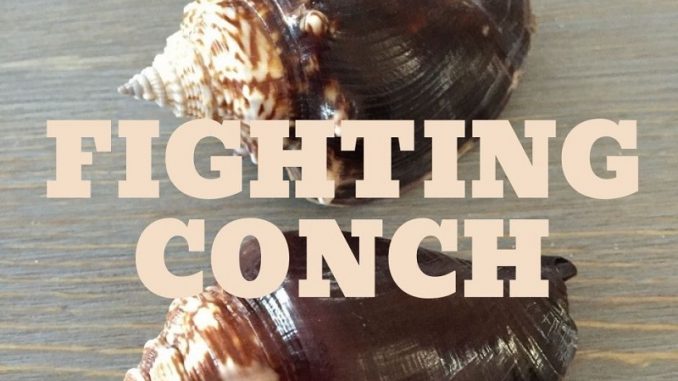
Invertebrates are a great way to add diversity to your aquarium. There are many different varieties, but one of the most popular choices for marine setups is a Fighting Conch.
Fighting Conchs might sound like aggressive animals that would be difficult to care for, but they’re actually harmless and can be kept by beginner aquarists.
They display some very interesting behaviors to keep you captivated. In addition, they provide a great service by helping to keep your tank clean.
Below we describe everything you might need to know when caring for a Fighting Conch. This includes their preferred tank conditions, ideal tank mates, nutritional diet, and much more…
TABLE OF CONTENTS
Fighting Conch Facts & Overview
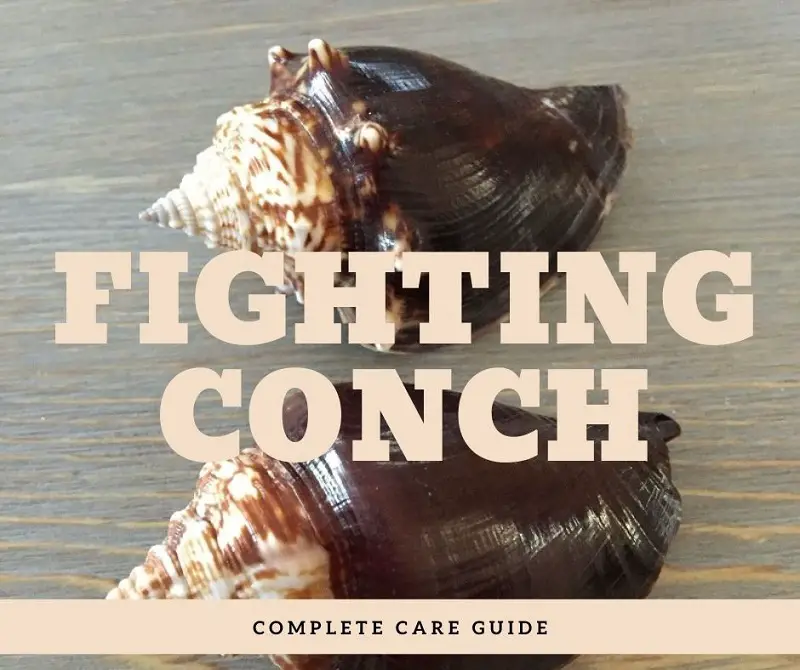
| Category | Rating |
| Care Level: | Easy |
| Temperament: | Peaceful |
| Color Form: | Pale pink/yellow |
| Lifespan: | Up to 10 years |
| Size: | Up to 5 inches |
| Diet: | Omnivore |
| Family: | Strombidae |
| Minimum Tank Size: | 20 gallons |
| Tank Set-Up: | Marine reef community |
| Compatibility: | Other reef-safe creatures |
There are lots of different species of conchs, they make up the Strombus genus. Fighting Conchs are some of the most common examples of home aquariums.
There are two main species of Fighting Conchs, Strombus pugilis (West Indian Fighting Conch) and Strombus alatus (Florida Fighting Conch).
These species are very similar in appearance so it’s easy to mix them up. Both can be kept in captivity though. Many people don’t even realize which species they have.
They are marine gastropod mollusks in the Strombidae family. Members of this family are often referred to as true conchs.
- pugilis populations are found along the eastern coasts of the Americas, from Florida down to Brazil, including Caribbean islands like Bermuda. S. alatus has a more northerly range.
Fighting Conchs aren’t sold in most pet stores, so you may need to research online to find your closest stock. Each individual can cost $10-$20 depending on the age and size of the conch.
When cared for properly, a Fighting Conch can survive for up to 10 years. They are sometimes a bigger commitment than people expect.
Typical Behavior
Their name is incredibly misleading because it makes them sound aggressive. They eat algae and detritus, so they have no need to go hunting. They are completely harmless to tank mates.
This includes corals; Fighting Conchs are completely reefed safe. They actually help corals by clearing up algae and aerating the substrate.
Most of their time is spent foraging for food. They use their strong foot to move around surfaces in the tank. This foot also helps to ‘catapult’ themselves if they get flipped upside down.
They are active during the day, so you get to witness all their behaviors.
Fighting Conchs are easy to care for; beginners should be fine adding one to their tank.
Unfortunately, their common name puts some people off before they research them.
Appearance
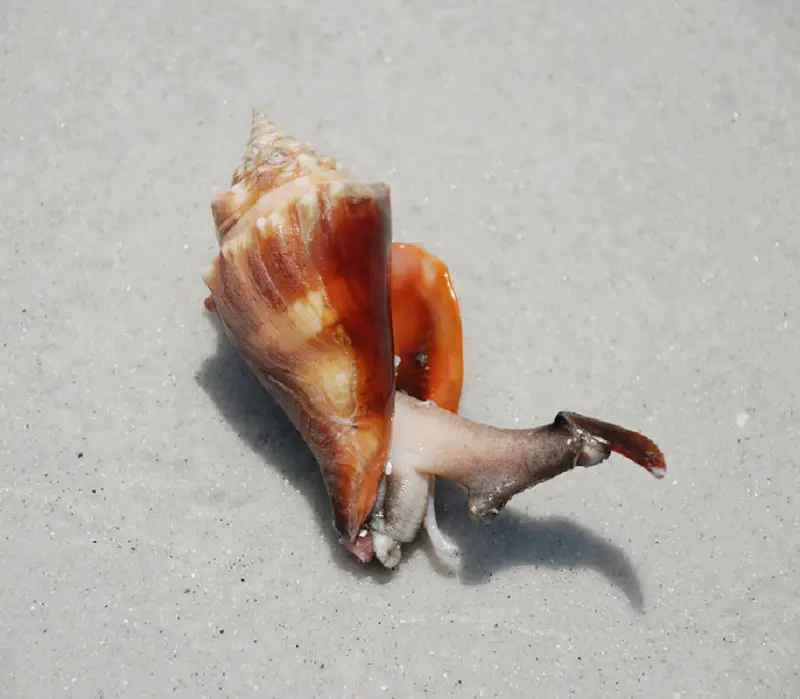
Most people are familiar with conch shells, even if they don’t realize it. They are shells you might find on the beach, put to your ear, and imagine you’re hearing the sound of the sea.
The shell of a Fighting Conch is thick and strong, making it difficult for predators (like hermit crabs) to penetrate it.
It’s generally conical in shape with 8-9 right-facing whorls, each with a row of subsutral spines. In some stocks, the spines are reduced or gone completely.
The opening is quite long and large, so this is where they are most vulnerable to predators. There is a claw-shaped operculum which is characteristic of many Strombus snails.
The shell is typically quite pale and striped. Common colors include pink, cream or yellow.
These Conchs have well-developed eyes, giving them better vision than most marine snails. The eyes emerge from under the lip of the shell at the opening.
As snails go, Fighting Conch is medium-sized. Shells tend to be around 3.5 inches, but some individuals reach 5 inches.
The best way to sex them is to put them on their side. When they right themselves, you should be able to observe a verge (on males) and an egg groove (on females).
The difference between S. pugilis and S. alatus is very slight. S. alatus has reduced substral spines and a more projected outer lip. S. pugilis has a dark purple stain on its anterior end.
Habitat and Tank Conditions
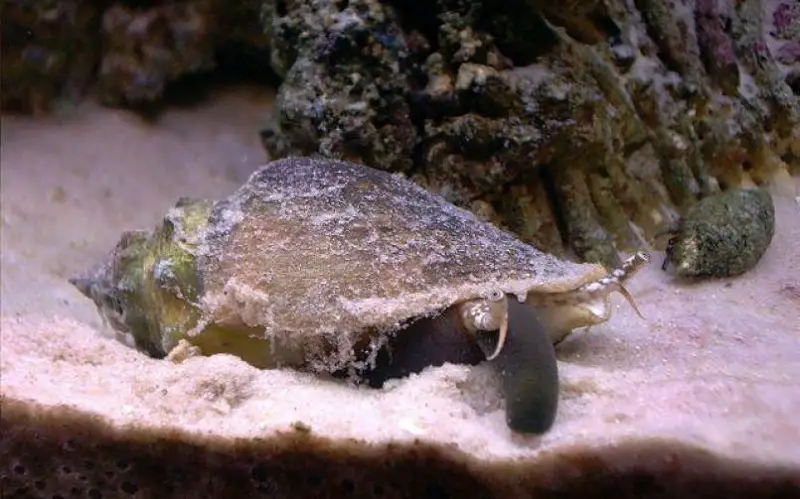
Fighting Conchs are found in tropical areas along the eastern coasts of the Americas, from Florida down to Brazil, though S. alatus tends to be slightly more northerly.
They live in the intertidal zone, preferring shallow waters (between 6-32ft) over deeper regions. These areas often include coral reefs, seagrass beds, and flat sandy areas.
As they age, they enter deeper waters, returning to the shallows to lay eggs.
The waters they live in are warm, alkaline, and fully marine. There would be plenty of access to light and water movement.
To keep your Fighting Conchs healthy, you must do your best to recreate their natural habitat in your aquarium. This is relatively simple to do.
Tank Conditions
These gastropods spend most of their time on the substrate, so it is important to pick a suitable one. Provide a thick layer of sand or silt so that they can burrow easily. They might be buried for days as they search for food.
When considering the design of the aquarium, there isn’t much that you need to specifically provide for your Fighting Conchs.
If you add decorations, they might climb up onto them as they scavenge. They don’t need caves because they have their shells.
Try to maintain the water parameters within their preferred range. Check the water chemistry regularly to monitor ammonia, nitrate and nitrite levels.
Salinity should be 1.023-1.026, the temperature should be 75-84°F, and the pH should be 8.1-8.4.
If the pH lowers, the acidity could start to dissolve and weaken shells.
Standard aquarium lighting should be fine.
What Size Aquarium do they need?
A 20-gallon tank should provide enough space for one Fighting Conch. If keeping multiple, the bigger the tank, the better.
This is especially the case if you’re keeping multiple males. They should be given extra space to keep aggression down, though they’re not likely to hurt each other.
How Many Can be kept per gallon?
The main concern is how much sand bed is available to each Fighting Conch. They need to be able to burrow and forage.
You can usually judge this yourself based on the size of your tank.
Tank Mates
Since Fighting Conchs are harmless (despite the name), they can be kept with most reef-safe tank mates. In the wild, they spend their lives around reefs, so they’d encounter lots of different animals.
The main concern is creatures that might target snails as food, which includes things like hermit crabs, puffers, triggers, and hawkfish.
This leaves lots of suitable options though, such as Clownfish, Butterflyfish, Green Chromis, Pajama Cardinalfish, and Damselfish.
They can live alongside other invertebrates too, like Peppermint Shrimp, Red Fire Shrimp, Bumble Bee Snails, and Astrea Snails.
Keeping corals is a great way to recreate their natural habitat, but these can be quite expensive for some aquarists.
Plants can also be good additions, especially if you want to encourage mating behaviors.
Can You Keep Fighting Conchs Together?
Most people keep Fighting Conch singly, but they can be kept together without issues.
Keeping more than one male may result in small amounts of aggression, though this is usually just in the form of pushing, so they won’t hurt each other.
By providing a large tank, you can help to minimize aggression.
Diet
Fighting Conchs are omnivorous, meaning that they’ll eat both meaty foods and vegetation, but in your aquarium, they’ll act herbivorous most of the time.
They feed on algae, bacteria, and detritus which can always be found around a fish tank.
They stretch out their snout so that they can use their radula (a strong tooth-like structure) to scrape off algae from rocks and other surfaces.
Bacteria and detritus are eaten as the gastropod sifts through the substrate. The majority of their time is spent looking for food, and burrowing in sand and silt takes up a lot of that time.
They need lots of food, which is why they are always foraging. The amount of algae, bacteria, and detritus in the tank already usually isn’t enough, so you need to supplement this with your own food.
You can do this by adding dried foods like algae pellets/wafers. They will eat uneaten foods that were intended for their tank mates too.
The amount of food you add will depend on the number of algae and detritus in the tank, so look closely. Since algae is a big part of a Fighting Conch’s diet, don’t remove all of it when cleaning the tank.
It is important to provide calcium. This is an important component of developing a strong and healthy shell. Calcium supplements are commonly available in pet stores.
Care
Along with feeding your pets, the main job you have as an aquarist is you maintain a healthy aquarium. You must keep the aquarium clean, which doesn’t take up too much time.
Perform partial water changes every 1-2 weeks and wipe away excess algae if it starts getting out of control (though not all of it, so your conchs can eat it).
When cleaning, you may need to pay extra attention to the substrate, since Fighting Conchs like a thick layer for burrowing. You can use a substrate vacuum cleaner to make cleaning it easier.
Use a water testing kit every week to check the parameters of the water are within the preferred range for Fighting Conchs (which we mentioned earlier).
Regular testing means that you can respond to problems early before they can cause health problems for your snails.
If the tank is healthy then these snails shouldn’t pick up a disease. They’re very hardy and are rarely affected by pathogens.
Their hardy nature means they can tolerate small changes in their environment if the problem is rectified before long. This makes them a great option for beginner aquarists that might make small mistakes.
Breeding
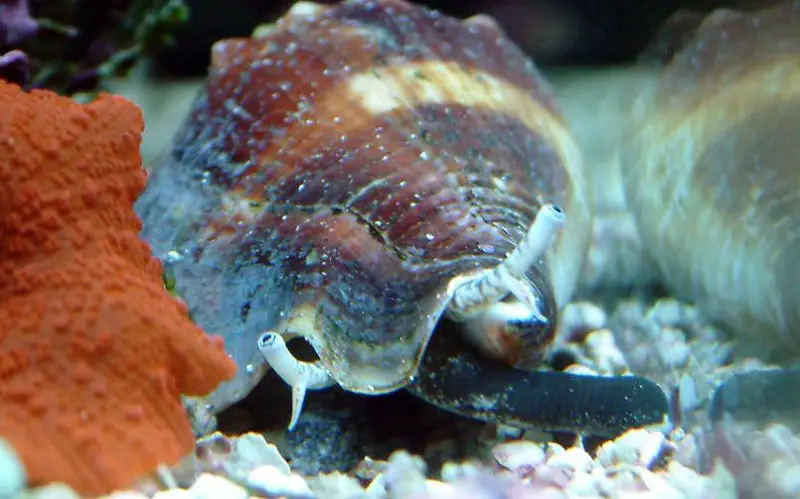
To begin courtship, a male will use his proboscis to interact with a female, but she might leap away. He will keep trying until he’s successful.
When he succeeds to get the female’s attention, he will insert his penis beneath the shell of the female to fertilize her eggs. The female will then lay the fertilized eggs on surfaces in the aquarium.
Even when laying eggs, the female can continue to mate. She is able to spawn and hold a male’s sperm at the same time.
Fertilized eggs are very small. One nest of eggs could contain over 180,000 of them. They should hatch within a couple of days.
The young will hatch as free-swimming larvae. They are very small, leaving them particularly vulnerable to being eaten.
They feed on phytoplankton until they metamorphose into a juvenile conch snail after 18-24 days.
Breeding Fighting Conchs can be difficult in captivity. You need to maintain perfect conditions and provide a highly nutritional diet.
In the wild, these snails might move to seagrass beds to mate, so providing plants might help to encourage mating. Gradually raising the temperature to 84°F might be a trigger too.
Are Fighting Conchs Suitable for Your Aquarium?
As a hardy and easy to care for invertebrate, Fighting Conchs can be cared for by anyone if they’ve done a little bit of research.
Their preferred conditions are easy to replicate in an aquarium, and they mostly look after themselves in terms of feeding.
The only reason that could stop you from adding these to your tank is if you have any tank mates that eat snails as part of their diet; you don’t want your Fighting Conchs to disappear.
These creatures make a unique attraction to an aquarium. Their active daytime behaviors will maintain your interest while their grazing on algae will help to maintain your tank.
Is the Fighting Conch your favorite snail? Let us know why in the comments below…

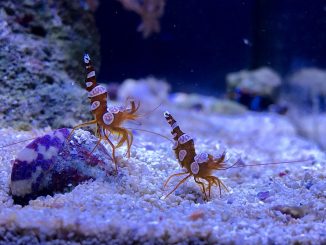
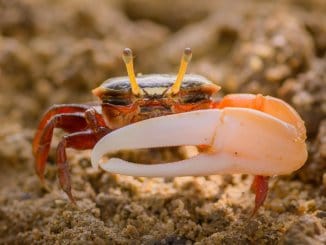
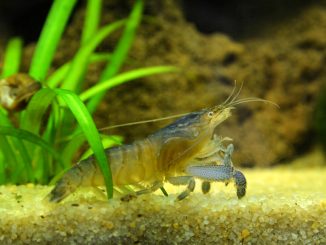
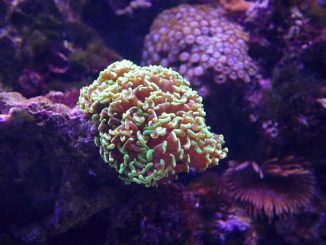
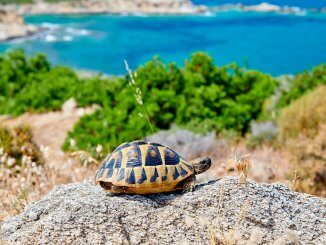
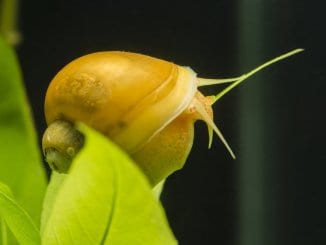
Be the first to comment